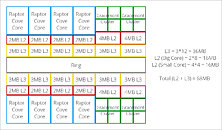
DFI Revolutionizes Industrial Computing with World's First MicroATX Motherboards
DFI, the world's leading brand in embedded motherboards and industrial computers, is thrilled to announce two of the world's first Industrial MicroATX motherboards to support Intel Core 12th, 13th, and 14th (Alder Lake-S, Raptor Lake-S and Raptor Lake-S Refresh) Gen Processors. "With support for the latest Intel Core processors and features including dual GPU slots and dual 10GbE ports, RPS310 and ADS310 represent a significant leap forward in innovation for industrial and medical computing, empowering manufacturing and healthcare professionals to achieve new levels of efficiency," said Jarry Chang, General Manager of Products Center at DFI.
RPS310
Featuring dual PCIe x16 Gen 4 GPU slots, addresses key challenges for Factory Automation professionals working in Smart manufacturing field, enabling improved visualized data, complex imagery processing and quality monitoring in automated production lines. RPS310 is also perfect for medical professionals to analyze Medical imaging data with unprecedented image quality and efficiency, improving diagnosis accuracy on MRIs and CT Scanners and X-rays.
RPS310
Featuring dual PCIe x16 Gen 4 GPU slots, addresses key challenges for Factory Automation professionals working in Smart manufacturing field, enabling improved visualized data, complex imagery processing and quality monitoring in automated production lines. RPS310 is also perfect for medical professionals to analyze Medical imaging data with unprecedented image quality and efficiency, improving diagnosis accuracy on MRIs and CT Scanners and X-rays.























































